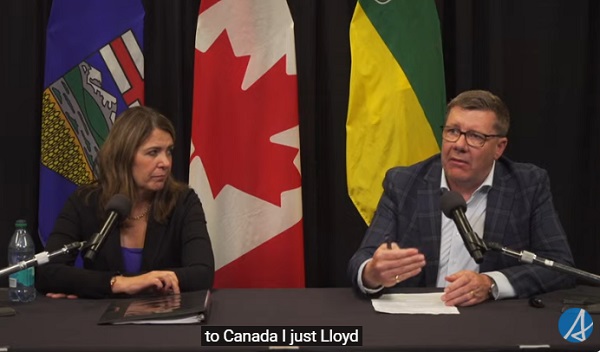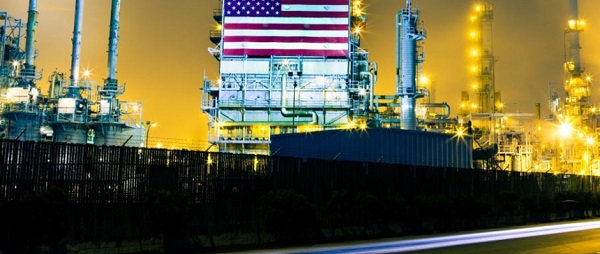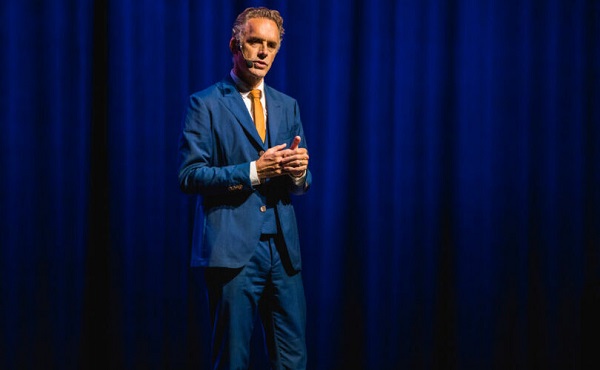Energy
Hydrogen is the most recent impractical green energy blind alley

From the Frontier Centre for Public Policy
By Ian Madsen
Climate Crisis alarmists tout yet another avenue by which renewable energy could replace reliable fossil fuel-sourced energy: hydrogen, ‘H2’. However, typical with alternative energy proposals, there are numerous problems with the widespread integration of this option in future energy production, distribution and consumption.
The first problem is producing H2. The current, and most cost-effective way, is from natural gas’s main component, methane. Natural gas, while not demonized like oil or coal, is still reviled by Climate activists, since the common byproduct is carbon dioxide, thus requiring expensive sequestration. An experimental carbon-removal process – pyrolysis, produces carbon nanotubes.
With methane out, the next hydrogen source is via electrolyzing water; using electricity to separate H2O into hydrogen and oxygen. The oxygen would either be recovered for commercial use or released into the atmosphere. However, hydrolysis is costly.
The equipment is expensive, and the energy required to produce the electricity is not cheap either – even if renewable energy sources, such as wind, solar and hydro, are used. There are predictions that H2 produced this way could become cost-competitive with methane-derived H2 by 2030, but using methane is not costless.
Indeed, advocates argue that intermittent wind and solar output would become reliable – ‘smoothed’ – by using hydrogen, as a storage and supply-levelling medium. The stored H2 would then generate electricity during dark or non-windy conditions. H2 has other uses, in smelting, or aluminum, steel, cement, glass and other high temperature industries.
Hydrogen seems feasible: it burns cleanly at a high temperature. However, that brings more issues.
The first problem is handling and transporting hydrogen. H2 dangerously weakens most standard high strength steel alloys in existing natural gas gathering and distribution systems, pipelines, storage and tank farms, in a process called hydrogen embrittlement. Hence, special alloys are needed. These cannot cost-effectively be retroactively deployed in existing natural gas distribution systems and pipelines. They would have to be entirely replaced, although these alloys are cheaper than legacy ones.
H2 has another problem. To be stored, must either be expensively cooled and pressurized to liquify it; or, if still gaseous, use expensive high pressure vessels. If H2 is not highly pressurized, then the vessels could be much larger, but that would increase materials costs and require more costly land area.
A reminder: natural gas goes from wellhead to customers with minimal storage. The goal of using renewables is to produce H2 for storage – and use during dark or calm periods – which could last days, as Texas and Germany discovered, disastrously.
Using H2 in transportation is impractical. H2 has low energy density, requiring, as noted, either highly-pressurized storage or expensive cooling, liquefaction and storage: unfeasible for motor vehicles. There is presently no H2 fuel distribution system. This would also have to be built, along with the aforesaid new pipelines.
Hundreds of billions of dollars are now invested in legacy natural gas pipelines, gathering and distribution systems. Replacing them, or building a parallel system, would be profoundly expensive, for no real gain.
Hydrogen makes no sense now; it may never do so, as it is an expensive redundancy. There are more details in a new Frontier Centre backgrounder “Why We Should be Skeptical of the Hydrogen Economy”.
Ian Madsen is the Senior Policy Analyst at the Frontier Centre for Public Policy.
Economy
Ottawa’s muddy energy policy leaves more questions than answers

From the Fraser Institute
Based on the recent throne speech (delivered by a King, no less) and subsequent periodic statements from Prime Minister Carney, the new federal government seems stuck in an ambiguous and ill-defined state of energy policy, leaving much open to question.
After meeting with the premiers earlier this month, the prime minister talked about “decarbonized barrels” of oil, which didn’t clarify matters much. We also have a stated goal of making Canada the world’s “leading energy superpower” in both clean and conventional energy. If “conventional energy” includes oil and gas (although we’re not sure), this could represent a reversal of the Trudeau government’s plan to phase-out fossil fuel use in Canada over the next few decades. Of course, if it only refers to hydro and nuclear (also forms of conventional energy) it might not.
According to the throne speech, the Carney government will work “closely with provinces, territories, and Indigenous Peoples to identify and catalyse projects of national significance. Projects that will connect Canada, that will deepen Canada’s ties with the world, and that will create high-paying jobs for generations.” That could mean more oil and gas pipelines, but then again, it might not—it might only refer to power transmission infrastructure for wind and solar power. Again, the government hasn’t been specific.
The throne speech was a bit more specific on the topic of regulatory reform and the federal impact assessment process for energy projects. Per the speech, a new “Major Federal Project Office” will ensure the time needed to approve projects will be reduced from the currently statutory limit of five years to two. Also, the government will strike cooperation agreements with interested provinces and territories within six months to establish a review standard of “one project, one review.” All of this, of course, is to take place while “upholding Canada’s world-leading environmental standards and its constitutional obligations to Indigenous Peoples.” However, what types of projects are likely to be approved is not discussed. Could be oil and gas, could be only wind and solar.
Potentially good stuff, but ill-defined, and without reference to the hard roadblocks the Trudeau government erected over the last decade that might thwart this vision.
For example, in 2019 the Trudeau government enacted Bill C-48 (a.k.a. the “Tanker Ban Bill”), which changed regulations for large oil transports coming and going from ports on British Columbia’s northern coast, effectively banning such shipments and limiting the ability of Canadian firms to export to non-U.S. markets. Scrapping C-48 would remove one obstacle from the government’s agenda.
In 2023, the Trudeau government introduced a cap on Canadian oil and gas-related greenhouse gas emissions, and in 2024, adopted major new regulations for methane emissions in the oil and gas sector, which will almost inevitably raise costs and curtail production. Removing these regulatory burdens from Canada’s energy sector would also help Canada achieve energy superpower status.
Finally, in 2024, the Trudeau government instituted new electricity regulations that will likely drive electricity rates through the roof, while ushering in an age of less-reliable electricity supply: a two-handed slap to Canadian energy consumers. Remember, the throne speech also called for building a more “affordable” Canada—eliminating these onerous regulations would help.
In summation, while the waters remain somewhat muddy, the Carney government appears to have some good ideas for Canadian energy policy. But it must act and enact some hard legislative and regulatory reforms to realize the positive promises of good policy.
Alberta
Unified message for Ottawa: Premier Danielle Smith and Premier Scott Moe call for change to federal policies

United in call for change: Joint statement |
“Wednesday, Alberta’s and Saskatchewan’s governments came together in Lloydminster to make a unified call for national change.
“Together, we call for an end to all federal interference in the development of provincial resources by:
- repealing or overhauling the Impact Assessment Act to respect provincial jurisdiction and eliminate barriers to nation-building resource development and transportation projects;
- eliminating the proposed oil and gas emissions cap;
- scrapping the Clean Electricity Regulations;
- lifting the oil tanker ban off the northern west coast;
- abandoning the net-zero vehicle mandate; and
- repealing any federal law or regulation that purports to regulate industrial carbon emissions, plastics or the commercial free speech of energy companies.
“The federal government must remove the barriers it created and fix the federal project approval processes so that private sector proponents have the confidence to invest.
“Starting with additional oil and gas pipeline access to tidewater on the west coast, our provinces must also see guaranteed corridor and port-to-port access to tidewater off the Pacific, Arctic and Atlantic coasts. This is critical for the international export of oil, gas, critical minerals, agricultural and forestry products, and other resources. Accessing world prices for our resources will benefit all Canadians, including our First Nations partners.
“Canada is facing a trade war on two fronts. The People’s Republic of China’s ‘anti-discrimination’ tariffs imposed on Canadian agri-food products have significant impacts on the West. We continue to call on the federal government to prioritize work towards the removal of Chinese tariffs. Recently announced tariff increases, on top of pre-existing tariffs, by the United States on Canadian steel and aluminum products are deeply concerning. We urge the Prime Minister to continue his work with the U.S. administration to seek the removal of all tariffs currently being imposed by the U.S. on Canada.
“Alberta and Saskatchewan agree that the federal government must change its policies if it is to reach its stated goal of becoming a global energy superpower and having the strongest economy in the G7. We need to have a federal government that works with, rather than against, the economic interests of Alberta and Saskatchewan. Making these changes will demonstrate the new Prime Minister’s commitment to doing so. Together, we will continue to fight to deliver on the immense potential of our provinces for the benefit of the people of Saskatchewan and Alberta.”
-

 Alberta2 days ago
Alberta2 days agoAlberta health care blockbuster: Province eliminating AHS Health Zones in favour of local decision-making!
-

 Alberta1 day ago
Alberta1 day agoCentral Alberta MP resigns to give Conservative leader Pierre Poilievre a chance to regain a seat in Parliament
-

 Alberta22 hours ago
Alberta22 hours agoCalls for a new pipeline to the coast are only getting louder
-

 conflict2 days ago
conflict2 days agoTrump: ‘We’ have control over Iranian airspace; know where Khomeini is hiding
-

 Alberta1 day ago
Alberta1 day agoAlberta pro-life group says health officials admit many babies are left to die after failed abortions
-

 Daily Caller1 day ago
Daily Caller1 day ago‘Not Held Hostage Anymore’: Economist Explains How America Benefits If Trump Gets Oil And Gas Expansion
-

 Alberta13 hours ago
Alberta13 hours agoUnified message for Ottawa: Premier Danielle Smith and Premier Scott Moe call for change to federal policies
-

 Censorship Industrial Complex17 hours ago
Censorship Industrial Complex17 hours agoJordan Peterson reveals DEI ‘expert’ serving as his ‘re-education coach’ for opposing LGBT agenda


